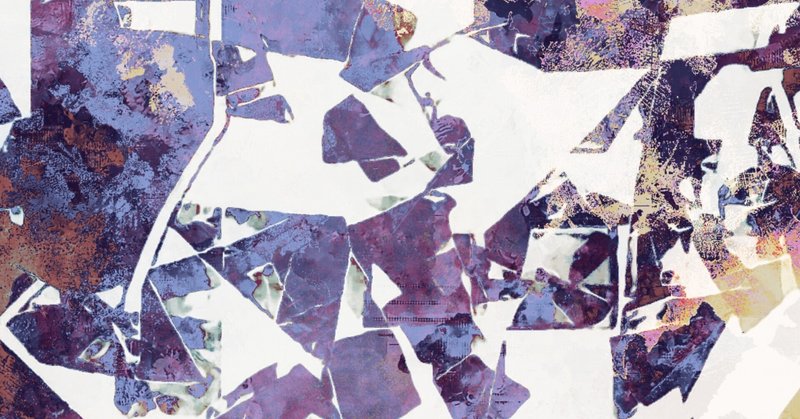
No.2 『一個人的収蔵 MY DEAR ART』 "My Dear Art" (香港)
1.作品紹介
2017年制作/撮影地:香港, 他/作品時間107分
監督:シュー・ハオシュエン
過去15年間でアジアのアート市場は爆発的に拡大しました。中国のコレクターは現在、アメリカ人やイギリス人よりもオークションに多くのお金を費やしています。本作ではアーティストやギャラリスト、専門家の証言を交え、現代美術の新しい市場の不思議と不条理を浮き彫りにしながら、ビジネスに変革をもたらしているアジアのコレクターの視点から、アートの魅力とマーケットの熱気について紐解きます。本作は2017年のアート・バーゼル香港で上映されたアジアのアート界の熱気を描き出したドキュメンタリー映画です。
*16,775ワード、字幕数1365、テロップ数225、計1590枚。作業日数7日間
2.作品の構成
2015年から2016年にかけての100日間、アジア(主に中国)の現代アートのギャラリーや展示会、アーティスト、コレクターの動きを追った作品。
北京( アイ・ギャラリー)→ 香港(ボンナムズ・オークション)→ ロンドン(クリスティーズ・オークション)→ 台北(コレクターの家)→ 北京(アーティストの仕事場)→ 香港(パシフィック・プレイス)→ 上海(バンク・ギャラリー)→ 東京(東京ギャラリーディレクター)→ 北京(アートブローカー)→ ロンドン(王立芸術学院)→ シンガポール(国立美術館)→ 上海(コレクター)→ イタリア / トスカーナ( 画廊)イタリア / ポッジボンシ、サン・ジミニャーノ(街中の芸術)→ 東京(西村画廊、寺田倉庫、コレクター宮津大輔)→ ロンドン(ペース画廊)→ 北京(バザール美術誌)→ 香港(イベント / アートバーゼル香港)→ ロンドン(サザビー / 現代アジアアート 春のセール内覧会)(クリスティーズ / 19世紀欧州アート 春のセール内覧会)
以上、10都市を目まぐるしく回り、数十人にのぼるアーティスト、ギャラリー関係者、ブローカー、コレクターたちにインタビューし、数多くのアート作品を紹介しながらアジア現代アートの熱気を伝えた作品である。
インタビューは中国語が多く、スクリプトは中国語と英語の併記であったがその変換ミスも多く見受けられた。単語自体は難しくないが、作品名やアーティスト名がたくさん出てくるため、その表記や日本語タイトルの裏取りがかなり大変な作品だった。
3.Key words and phrases
monochrome painting = 単色画
aesthetic = 美の、審美眼のある *読み方はエステティック
visual experience = 視覚的体験
abstract paintings = 抽象画
fatigue = 疲労、倦怠感
the cultural revolution = 文化大革命
the Tiananmen Square movement = 天安門事件
contemporary art = 現代アート
4.英文と日本語訳
Day 1(北京:オランダの画家マルレーネ・デュマス作「ブロークン・ホワイト」についてコレクターの話)
I get more interested in her after seeing her works. Many people in China are copying her painting style. But they can't capture her essence. Or the power of her paintings. This painter isn't particularly crazy. She's an ordinary person who paints what she likes. She’s a genius. Other painters need passion before they can paint something good, but she said she doesn't need it. She just paints what she wants. (71 words)
彼女の作品を見ると画家本人にも興味がわく。多くの中国人が彼女の作品をまねようとする。だが 絵に込められた本質や力は表現しきれない。彼女自身は別に変り者ではない。描きたいものを描く普通の人だ。だが 天才だ。普通は情熱が必要だが、彼女はそんなもの要らないという。描きたいものを描く、それだけだ。
Day 2(香港:現代アート展での学芸員の話)
Monochrome painting - I think it's a result of the change in aesthetic visual experience during these years. Why have abstract paintings become popular recently? I think a very important reason is that computers and cameras nowadays can record very realistic sensory images. Actually, this kind can cause visual fatigue. When you want to rest your eyes, you might want to see some simple paintings, monochrome paintings. (67 words)
単色画の流行は、近年の美意識における視覚的体験の変化によるものです。
なぜ抽象画が人気なのか? 私は最近のコンピューターやカメラがあまりに細かい視覚イメージを映し出すからだと思います。こういうものを見ると目がとても疲れます。目を休めるために見たくなるのが単色画です。
Day 3(北京:コフィンペイント・アーティスト、ワン・グァングルの話)
I think the person has the right to do whatever he pleases. My take is that when the paintings are in the studio, they belong to me. After I finish my painting and sell it, I'm not concerned about it anymore. It might bring you many surprises in the future. For example, say, the price of a 10-year-old painting has skyrocketed in the market. You would think it has nothing to do with you, but people will think highly of you because of the price. That's a surprise, and you didn't expect it when you started the work. From this perspective, the work has not been completed. The work is still out there. Even the essence of the work, in many cases, is enriched by other people after the work left my studio. (133 words)
作品をどうしようとその人の勝手だと思う。作品がアトリエにある間は僕が所有者だが、描き終わって売った後はどうなろうと気にしない。将来どうなるか分からない。10年後には値段が跳ね上がることもあり得る。作家には関係なさそうだが、値段が上がれば作家の価値も上がる。それは作品を作っている時には分からないことだ。ある意味、作品は完成していない。まだ生き続けていると言える。人の手に渡った後でも作品は豊かになっていく。
Day 4(北京:現代アート・ブローカー)
I made Ai Weiwei's works popular among collectors. I didn't understand Ai Weiwei's works until I understood Chinese contemporary art. I was poor when I came back to China. I saw Ai Weiwei's bricks in Christophe W. Mao's home. We had a BBQ in Christophe W. Mao's home. I asked him whether they were Ai Weiwei's artworks, and he said yes. I asked him for the price. He said 1,000 dollars for one brick. Haward Farber once asked me who is the best Chinese artist. I said Ai Weiwei. Selling these artworks is easy. People like to see things they haven't seen before. People like to see things they can remember. Ai Wei-Wei's name is easy to remember and his stories are easy to tell. He's the son of a great poet. Selling things means telling stories.
(137 words)
私が アイ・ウェイウェイの作品を有名にした。現代美術を理解するまでは彼の作品の良さが分からなかった。中国に戻ってからは貧しくて金が欲しかった。ウェイウェイのレンガをクリストファー・マオの家で見た。バーベキューをしていた時だった。いくらか聞いたら1つ1000ドルだと言われた。ハワード・ファーバーに中国で1番の芸術家を聞かれ、ウェイウェイだと答えた。アート作品を売るなんて簡単だ。人は見たことがないものを見たい。覚えられるものが欲しい。アイ・ウェイウェイは覚えやすい。偉大な詩人の息子というのも語りやすい。物を売りたければ語れ。
Day 5(トスカーナ:画廊オーナーの話)
Every year, 10 of these and the three big ones (=wine bottles) are sold in an auction. And the money goes to charity. This year, the last piece of the artist was sold for three or four hundred thousand dollars. It's crazy, because one wine without the artist's label, would probably be 400 euros at most. So, it's incredible. We held the charity dinner for producing water. And we give water to places that don't have water in the world. The project was art plus wine and water. (88 words)
毎年この(ワインの)ビン10本と大ビン3本がオークションで売られる。売上金はチャリティに寄付される。今年は芸術家とのコラボで売れた最後のワインが3~4万ドルしたそうだ。バカげてる。ワイン1本の値段は、彼らのラベルがなければせいぜい400ユーロ(約65,000円)だ。信じられないよ。僕たちはチャリティーディナーを開催した。世界の水がない場所に水を届けるためだ。ワインとアートで水を造るプロジェクトだ。
Day 6(東京:コレクター宮津大輔氏の話)
All of my collections, just like painting, installation, video, the sculpture, are in a very professional warehouse, (with) same temperature, same humidity. Because the artworks (are) not only for me but also for everybody who loves art. And we collectors have to pass our collections to the next generation with perfect condition, I trust. Because now we can enjoy the beautiful pieces thousand years ago, five hundred years ago, because many of the collectors pass. I am buying and getting only the young artists that sometimes nobody knows. Sometimes the young artists have to work part-time job for their lives. I don't wanna be just a visitor. I wanna be a collector, for them. I want to pay small money for young artists' future, I think. (126 words)
私の絵や彫刻といったコレクションは、すべて一定の温度と湿度で管理された専用の倉庫に入れてある。それは美術品が自分のためだけでなく、すべての愛好家のためにあるからだ。コレクターは集めた作品を完全な状態で次の世代に渡す義務がある。それが私の信念だ。私たちが今、1000年前や500年前の美しい作品を楽しめるのは、多くのコレクターたちが残してくれたからだ。僕は若い無名の作家の物だけを買う。若い人たちは生活のためにアルバイトをしなければならない。僕はただのお客さんではいたくない。彼らのためにコレクターでありたい。彼らの未来のために少しでも貢献したいんだ。
Day 7(街の人や芸術家に聞いた芸術や芸術家への疑問)
Q1: Isn't it better to experience the beauty, culture and landscapes of the world?
Q2: Why would you spend so much money on something useless and put them in your house?
Q3: How does it feel when people say they don't get your art?
Q4: Why would you want to be an artist? -- For money. (an art broker)
Q5: The art industry is a difficult one to make a living. So how supportive are your family members? -- I don't have a fucking family. (an art broker)
Q6: What's the difference between rubbish and art? Who decides?
Q7: I have no questions for them. I don’t think any questions is a real question. Questions that can be asked are not questions. Because in my opinion, the real questions are those that haven't yet come. Those are real questions. (an artist) (135words)
Q1: どうせなら海外で実際に文化やきれいな景色を体験するほうがよくない?
Q2: なぜ役に立たないものに大金を払い家の中に置くのか?
Q3: もし、自分の作品が要らないと言われたらどう感じるか?
Q4: なぜ芸術家に? -- 金のためだよ(ブローカー)
Q5: 芸術の世界は稼ぐのが大変。家族は支えてくれてる?
-- 俺には家族なんていねえ!(ブローカー)
Q6: ゴミとアートの違いは? 誰が決める?
Q7: 聞きたいことはない。聞けるようなことは疑問ではない。僕が本当に知りたいのはこれからのことだ。知らないことを知りたい。(芸術家)
5.まとめ「アジア現代アート市場の熱気」
日本でも美術展を開けば連日大勢の人が押し寄せるくらいアート人気は高いが、美術品を購入してコレクターになろうという人はそう多くはないように思われる。この作品を通して中国、特に北京や上海、香港などの大都市における現代アートのオークションの人気ぶり、大勢のコレクターやバイヤーたちの熱気に驚いた。私には現代アートの価値はよく分からないが、今素晴らしいと思えるモネやゴッホ、ピカソも出てきた当初は前衛的な「モダンアート」だったのだろうと思えば、今ある現代アートもいずれは見慣れて素晴らしいと思えるようになるのかもしれない。コレクターたちがいたから過去の偉大な作品や文化が残ったという宮津大輔さん(現在は横浜美術大学教授、森美術館理事)の言葉が印象的だった(宮津さんの使用言語は英語)。
出典:アジアンドキュメンタリーズ
『一個人的収蔵 MY DEAR ART』 "My Dear Art"
単品視聴(495円)、月額見放題(990円/月)
字幕翻訳者:浦田貴美枝
Blog:アラカンからのチャレンジ (ameblo.jp)
著書:『夢を叶える字幕翻訳者の翻訳ノート』https://x.gd/ySA4m
Copyright@2024 Kimie Urata note
この記事が気に入ったらサポートをしてみませんか?
